Ultimate Guide to Solar IoT Garden Automation
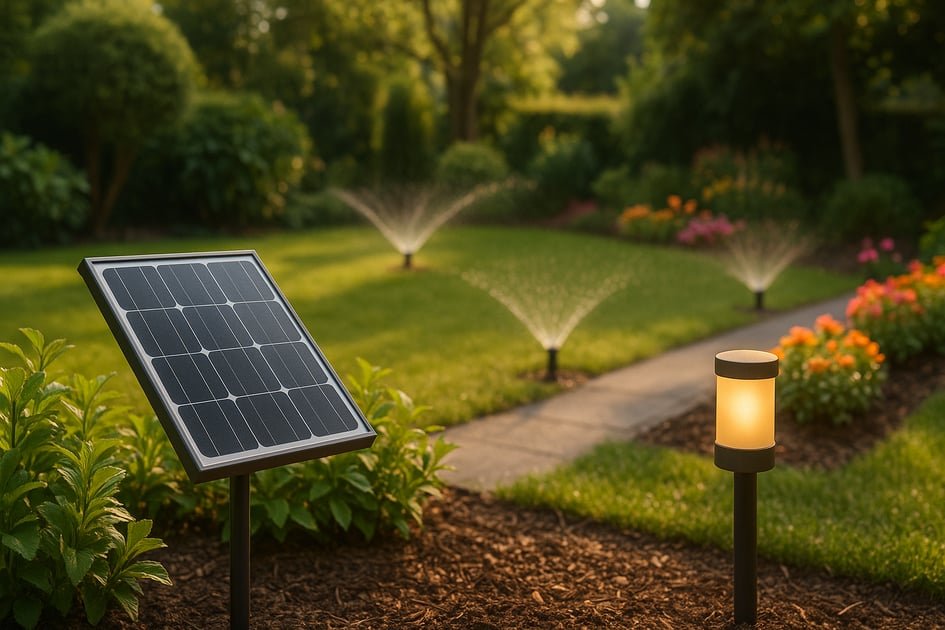
Gardening just got smarter. Solar-powered IoT systems now simplify garden care by automating watering, lighting, and plant health monitoring. Here's how they work:
- Solar Panels: Power the system using renewable energy, independent of the grid.
- IoT Sensors: Monitor soil moisture, temperature, and more to ensure optimal plant care.
- Automation: Watering and lighting adjust automatically based on real-time data.
- AI Tools: Help design efficient garden layouts and recommend suitable plants.
- Remote Control: Manage your garden from anywhere via apps and cloud platforms.
These systems save water, reduce energy costs, and make gardening easier while keeping plants healthy. Whether you're a beginner or an experienced gardener, solar IoT automation offers a smarter way to manage your garden.
Solar Powered Automatic Irrigation System using Moisture Sensor and Arduino
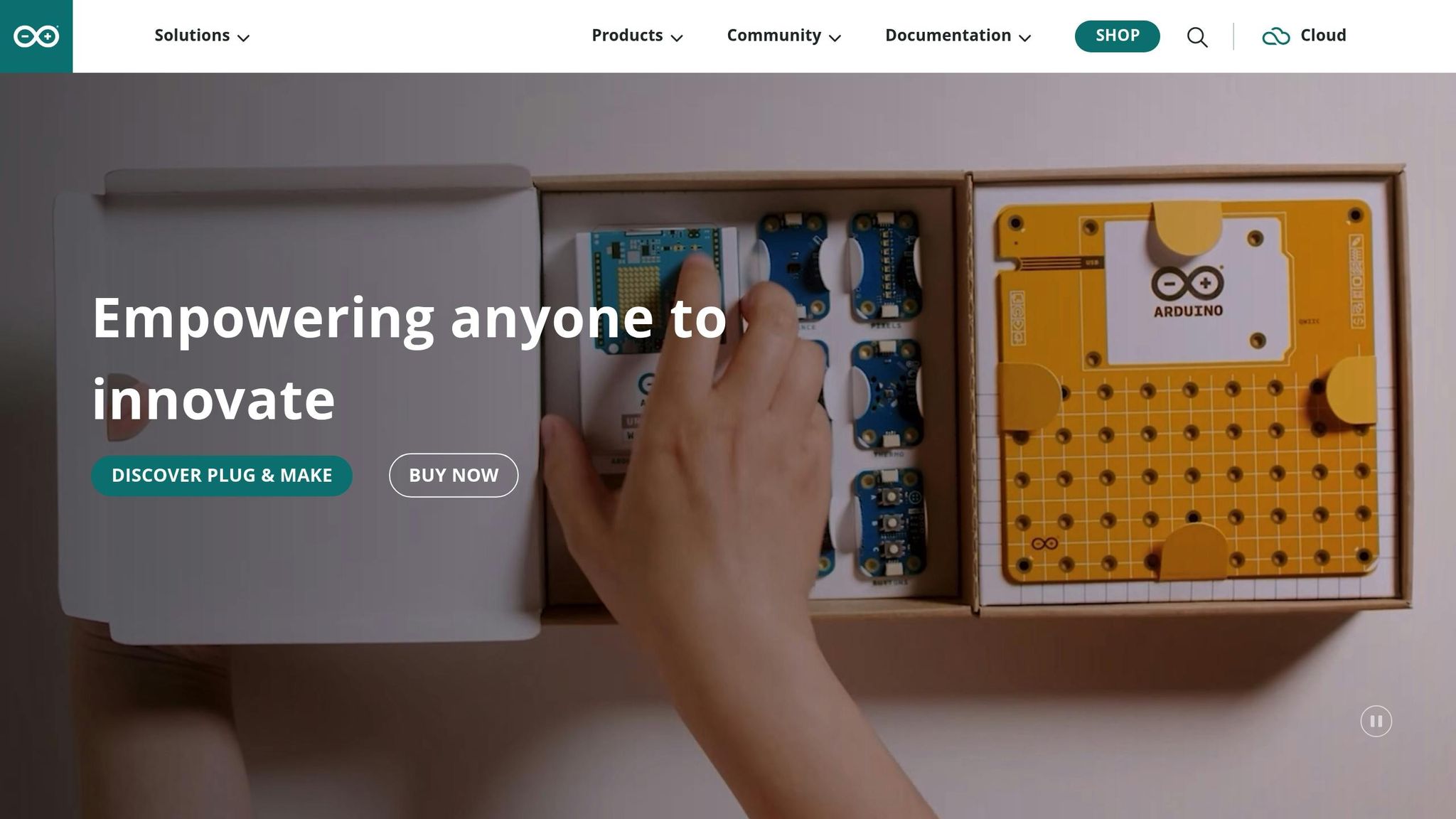

Core Components of Solar IoT Garden Systems
A solar IoT garden system combines essential elements to automate irrigation, lighting, and monitoring. By understanding these components, you can make better choices when setting up your automated garden.
Hardware Components for Solar IoT Systems
At the heart of a solar IoT garden system lies its hardware, which powers and controls the entire setup:
- Solar Panels: These panels produce 12V or 24V DC power, typically ranging from 20–100W, depending on the system's energy needs.
- Microcontrollers: Devices like Arduino or Raspberry Pi serve as the brain of the system, processing data from sensors and managing operations while consuming just 0.5–2 watts.
- Sensors: Beyond basic moisture and light sensors, advanced options like pH detectors, temperature sensors, and humidity monitors provide a detailed understanding of air and soil conditions, ensuring optimal plant growth.
- Actuators: Water pumps, solenoid valves, and LED grow lights respond to sensor data, automating tasks like watering and lighting adjustments.
- Batteries: 12V deep-cycle lead-acid or lithium-ion batteries store extra solar energy. For instance, a 100Ah battery can power a small garden system for 2–3 days without sunlight.
- Charge Controllers: These devices protect batteries from overcharging and regulate energy flow from solar panels. MPPT (Maximum Power Point Tracking) controllers are especially efficient in varying sunlight conditions.
Once the hardware is in place, the next step is ensuring seamless communication for remote control and data management.
Wireless Connectivity and Cloud Integration
Efficient connectivity is key to managing your solar IoT garden system. Here are some options:
- Wi-Fi Modules: Consuming about 1–2 watts during transmission, Wi-Fi enables remote monitoring through apps and web dashboards.
- LoRaWAN Technology: Ideal for large properties, this low-power, long-range solution can transmit data up to 10 miles in rural areas. LoRaWAN devices are highly energy-efficient, often lasting years on a single battery.
- Bluetooth Low Energy (BLE): BLE offers short-range communication (up to 100 feet) with minimal power consumption, making it perfect for sensor networks in smaller gardens.
- Cloud Platforms: Services like AWS IoT Core, Google Cloud IoT, or Microsoft Azure IoT handle data from multiple sensors efficiently. These platforms typically charge between $0.08 and $0.30 per million messages, making them cost-effective for home gardens.
- Edge Computing: This method processes some data locally, reducing bandwidth use and enabling faster responses, such as triggering emergency watering during extreme heat.
These connectivity tools ensure smooth operation and provide access to real-time insights for better garden management.
Real-Time Data and Analytics Tools
Data and analytics play a crucial role in optimizing garden performance. Here's how they work:
- Visualization Dashboards: These tools transform sensor data into easy-to-read charts, offering updates every 15–30 minutes on moisture, temperature, and irrigation trends.
- Predictive Analytics: By analyzing historical data, machine learning algorithms can forecast future needs, such as when to water plants based on weather, soil conditions, and growth stages. This prevents both over-watering and under-watering.
- Alert Systems: Notifications via text, email, or push alerts let you know when urgent action is needed, such as addressing low soil moisture or extreme temperatures. You can customize these alerts based on your garden's specific requirements.
- Mobile Applications: These apps give you full control over your garden from your smartphone. They display real-time sensor readings, allow manual watering controls, and provide historical data analysis. Many apps also work offline, storing commands until the system reconnects.
- Integration APIs: APIs enable your garden system to connect with other smart home devices, such as weather stations or irrigation controllers, creating a fully integrated management network.
Key Functions and Automation Capabilities
Solar IoT garden systems take the hassle out of garden care by automating essential tasks. These systems respond to real-time conditions, conserving resources and minimizing the need for hands-on involvement.
Automated Watering Systems
Soil moisture sensors keep a close eye on root-zone moisture levels and activate irrigation only when necessary. By factoring in weather forecasts, these systems can delay watering if rain is on the way, avoiding wasteful overwatering.
Zone-based irrigation ensures that different parts of the garden get the specific care they need. For instance, some plants may thrive with deep, infrequent watering, while others require lighter, more regular hydration. These systems adjust water delivery based on environmental feedback, and flow sensors notify users of any irrigation issues, like leaks or blockages.
Once watering is optimized, smart lighting takes garden efficiency to the next level.
Smart Lighting Solutions
Smart lighting systems adapt to natural light conditions, providing supplemental illumination only when needed. For shorter days, photoperiod control extends daylight hours, while shaded areas get a boost in brightness.
Ambient sensors ensure lights activate only when necessary, while solar-powered pathway lights enhance both safety and aesthetics. Timer-based accent lighting adds charm and usability to the garden after sunset. Additionally, spectrum optimization adjusts LED outputs throughout the day to mimic natural sunlight more effectively.
But a truly smart garden doesn’t stop at water and light - it also monitors plant health to keep everything thriving.
Plant Health Monitoring and Management
Plant health monitoring uses advanced sensors and imaging to catch potential issues before they escalate. Solar IoT systems continuously gather data to maintain ideal growing conditions.
Multi-parameter sensors measure pH levels, nutrients, and soil temperature, ensuring plants get exactly what they need. Leaf wetness sensors detect moisture on leaves, helping to prevent fungal infections.
Time-lapse imaging tracks plant growth and flags early signs of problems like pest damage or nutrient deficiencies. Environmental stress monitoring combines data from temperature, humidity, and light sensors to assess plant stress levels. If conditions stray from the optimal range, the system can automatically adjust irrigation or activate shading. Nutrient management tools and pest detection algorithms also analyze sensor data, enabling timely interventions to keep plants healthy and flourishing.
sbb-itb-4d6a8dd
🚀 Ready to Reinvent Your Garden?
Join thousands of homeowners who have transformed their gardens using our AI design tool. Upload one photo to explore endless possibilities.
Get your AI garden designs →Installing and Maintaining Solar IoT Garden Systems
Once your solar IoT garden system is up and running, keeping it in good shape is key to ensuring it works efficiently and reliably. Regular maintenance can go a long way in preserving its performance for years to come.
Maintenance and Troubleshooting Tips
Solar Panel Care
- Clean your solar panels at least twice a year - or every three months if you live in a dusty area. Mornings that are cool and overcast are ideal for cleaning to avoid streaking.
- Always turn off the solar system before starting the cleaning process.
- Use a soft brush or a microfiber cloth with warm, soapy water, paired with a gentle spray from a hose. If your panels are hard to reach, telescopic poles can make the job safer and easier.
- While cleaning, check for cracks, loose wiring, or debris that might block sunlight. If accessing the panels is challenging, professional maintenance might be a safer option. [1]
IoT Device Maintenance
Regularly inspect sensor housings for signs of wear or environmental damage, and recalibrate sensors as needed. Keeping the devices updated with the latest manufacturer-recommended software can help maintain their accuracy and extend their lifespan. These small steps can ensure your garden system continues to perform at its best.
Using AI for Garden Design and Optimization
AI isn't just about automating the basics - it’s also about transforming how gardens are designed and managed. With AI-powered design tools, you can create layouts and select plants that complement your automated systems, cutting down on manual intervention and boosting efficiency.
Designing Gardens with AIGardenPlanner
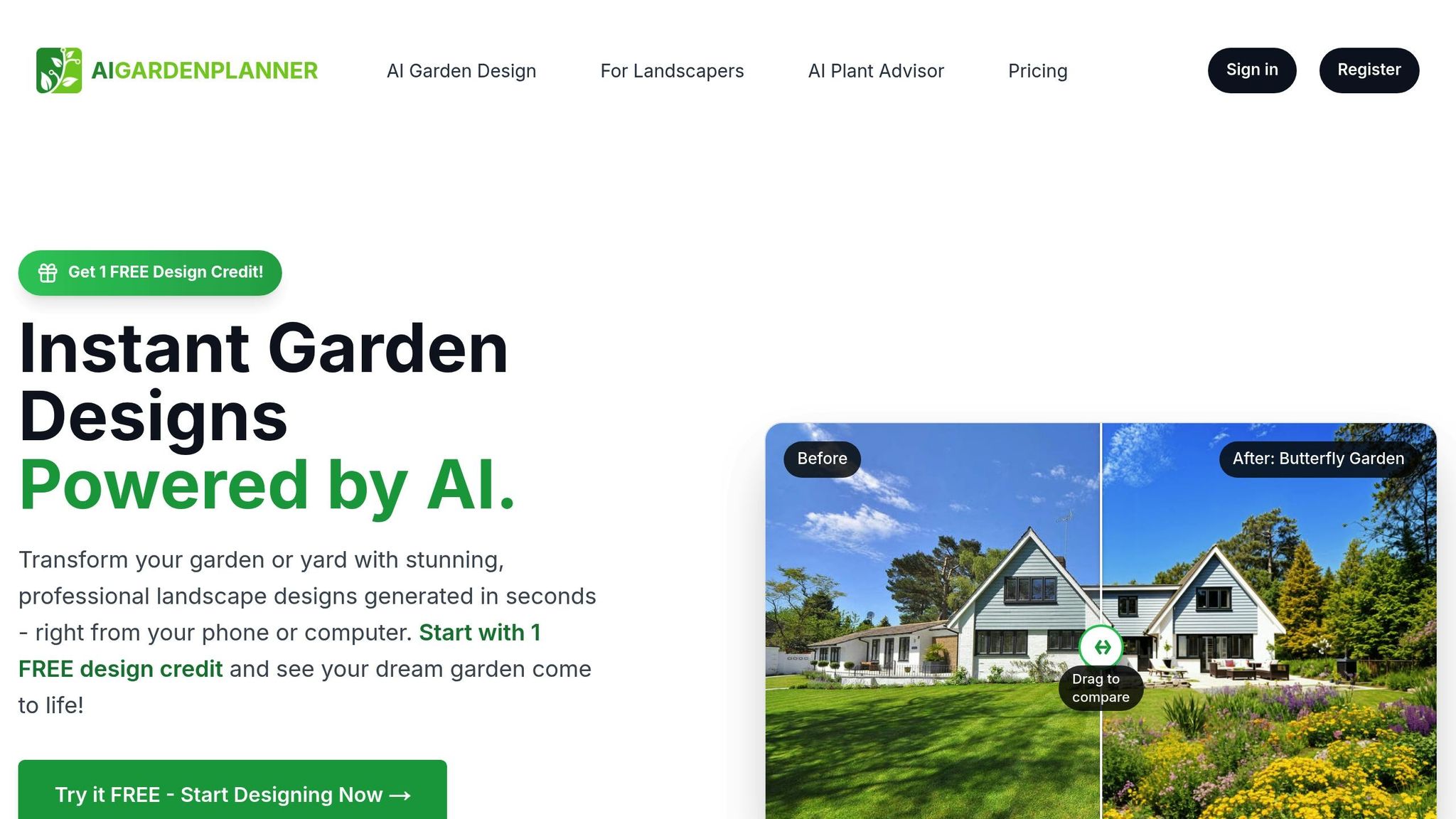
AIGardenPlanner is a platform that uses AI to turn your garden dreams into reality. All you need to do is upload a photo of your space, and the tool generates professional, tailored landscape designs.
With over 50 garden styles to choose from - ranging from sleek, modern layouts to charming cottage gardens - you can find a design that matches your aesthetic. Want something unique? You can even create custom styles to bring your specific vision to life. This flexibility is especially handy for planning solar IoT setups, ensuring optimal placement for sensors, irrigation systems, and solar panels.
For gardeners in the U.S., the platform’s location-based recommendations are a standout feature. It takes into account your local climate, growing conditions, and seasonal patterns to suggest designs that thrive in your area. Whether you're battling the humid Southeast summers or the arid Southwest heat, the AI adjusts its suggestions to suit your environment.
The tool also provides high-resolution design downloads, making it easy to share plans with contractors or use them as guides for installing solar IoT components. Professional landscapers can take advantage of commercial licensing to incorporate these AI-generated designs into their client projects.
AI-Driven Plant Recommendations
The AI Plant Advisor feature goes beyond design, offering plant recommendations tailored to your location, climate, and personal preferences. This is particularly useful when integrating with solar IoT systems.
For example, if you're setting up automated drip irrigation, the AI can suggest plants with similar water needs, allowing you to group them into the same irrigation zones. It also provides detailed growing guides and maintenance schedules, which can be programmed directly into your IoT system. This way, sensors can track growth milestones or flag potential issues at the right time.
By focusing on location-specific suggestions, the AI helps you avoid plants that require constant manual care or have unpredictable growth patterns that might interfere with sensor placement. These insights make it easier to set up a garden that works seamlessly with automation.
Combining AI with IoT for Better Efficiency
The magic happens when AI-driven garden designs and plant recommendations are paired with your solar IoT system. Smart layout planning ensures plants with similar needs are grouped together, while solar-powered sensors are strategically positioned to serve multiple areas, reducing the number of devices required and simplifying the wireless network.
AI’s understanding of seasonal growth patterns adds another layer of efficiency. For instance, if your garden includes plants that go dormant in winter, you can program your IoT system to scale back sensor activity during those months, conserving solar battery power for when it’s needed most.
Even maintenance scheduling becomes more precise. AI recommendations can guide your automated irrigation system to follow tailored schedules, ensuring each plant gets the care it needs without waste. Together, AI and IoT create a garden that’s not only beautiful but also smart and efficient.
Conclusion
Solar IoT garden automation is reshaping how we care for gardens by blending renewable energy, smart sensors, and AI-driven tools into a seamless system. This combination offers a range of benefits, including reduced energy costs, improved convenience, and eco-friendly practices.
With solar-powered systems, gardens can operate independently from the electrical grid, cutting down on energy expenses. These systems also ensure consistent performance, even on cloudy days, thanks to reliable battery storage. Automated features, like real-time alerts sent straight to your smartphone, keep you informed about soil conditions and plant health. This means you can maintain a thriving garden - even during extended absences - without needing outside assistance.
In addition to harnessing renewable energy, these systems promote efficient water use through precise irrigation, significantly reducing waste compared to conventional sprinklers. Smart monitoring also helps catch potential issues early, minimizing the need for chemical treatments and fostering healthier soil ecosystems. These sustainable practices align beautifully with contemporary garden design.
When paired with AI tools like AIGardenPlanner, these systems take garden management to the next level. They ensure that plant choices complement automated systems, resulting in gardens that are not only visually stunning but also fully compatible with smart technology.
As solar panels become more efficient and sensor technology becomes more accessible, these systems are set to become a standard feature in both residential and commercial gardening. Embracing solar IoT automation now means stepping into smarter, more sustainable garden care for the future.
FAQs
How do solar-powered IoT garden systems help save energy and conserve water?
Solar-powered IoT garden systems offer a smart way to reduce energy consumption by using solar panels to power devices like irrigation controllers and sensors. This minimizes reliance on grid electricity, helping to lower energy costs while supporting environmentally friendly practices.
These systems also excel at conserving water. By using real-time data from soil moisture sensors and weather forecasts, they ensure your garden gets watered only when it truly needs it. This approach can cut water waste by an impressive 20–50%. By blending solar energy with intelligent automation, these systems make gardening not only more efficient but also kinder to the planet.
What should I consider when choosing hardware for a solar-powered IoT garden system?
When putting together the hardware for a solar-powered IoT garden system, it’s important to prioritize energy-efficient components. Microcontrollers like the ESP32 or NodeMCU are excellent choices because they’re designed to work well with solar power while keeping energy use low. For monitoring conditions, go with outdoor-ready sensors that can handle soil moisture, temperature, and sunlight measurements, even in varying weather conditions.
You’ll also want to invest in reliable solar panels and sturdy weatherproof enclosures. These will not only provide consistent power but also protect your equipment from harsh outdoor elements. Together, these components play a crucial role in ensuring your smart garden system runs smoothly and efficiently over time.
How do AI tools improve solar-powered IoT garden automation?
AI tools are transforming solar-powered IoT garden automation, making garden care smarter, more efficient, and eco-conscious. For instance, they fine-tune watering schedules to avoid overwatering and cut down on water waste - sometimes saving as much as 30%. These tools also offer real-time tracking of soil moisture, sunlight, and temperature, enabling adjustments that help plants grow healthier.
By taking over routine tasks like irrigation, lighting, and environmental monitoring, AI simplifies garden management. This is especially beneficial in areas with water restrictions or tough climates, ensuring your garden flourishes with minimal effort on your part.
🎨 Visualize Your Dream Garden Today!
Transform any outdoor space into a professional landscape design in minutes. Just upload a photo, choose your style, and let our AI do the rest.
Start your garden transformation now →Related posts
Related Articles
Elevate Your Garden: Creative Raised Garden Ideas and Tips
Discover the benefits of raised garden beds, materials for building them, plant selection tips, and innovative raised garden ideas to enhance your gardening experience.

Ultimate Guide to Winter Wildlife Gardening
Transform your garden into a wildlife sanctuary this winter by providing essential food, water, and shelter for birds and small mammals.
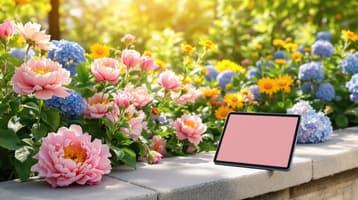
How AI Picks Garden Color Schemes
AI tools transform garden design by analyzing photos to create customized color schemes, considering local climate and personal preferences.
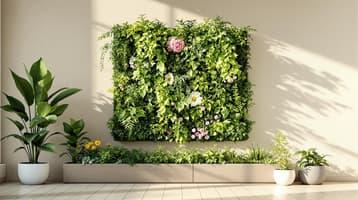
AI Tools for Designing Vertical Plant Combinations
AI tools streamline vertical garden design by optimizing plant selection, layout, and maintenance, making gardening accessible for everyone.
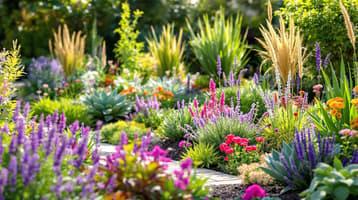
Best AI Tools for Heat-Tolerant Garden Planning
Learn how AI tools can help you design and maintain a heat-tolerant garden with optimal plant selection and efficient watering strategies.
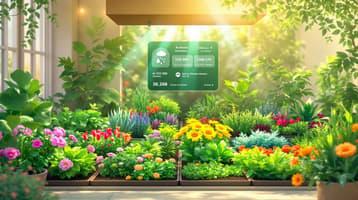
AI-Driven Rainfall Schedules for Every Climate
Utilize AI-driven rainfall schedules to enhance garden planning, conserve water, and ensure optimal plant care based on local climate conditions.